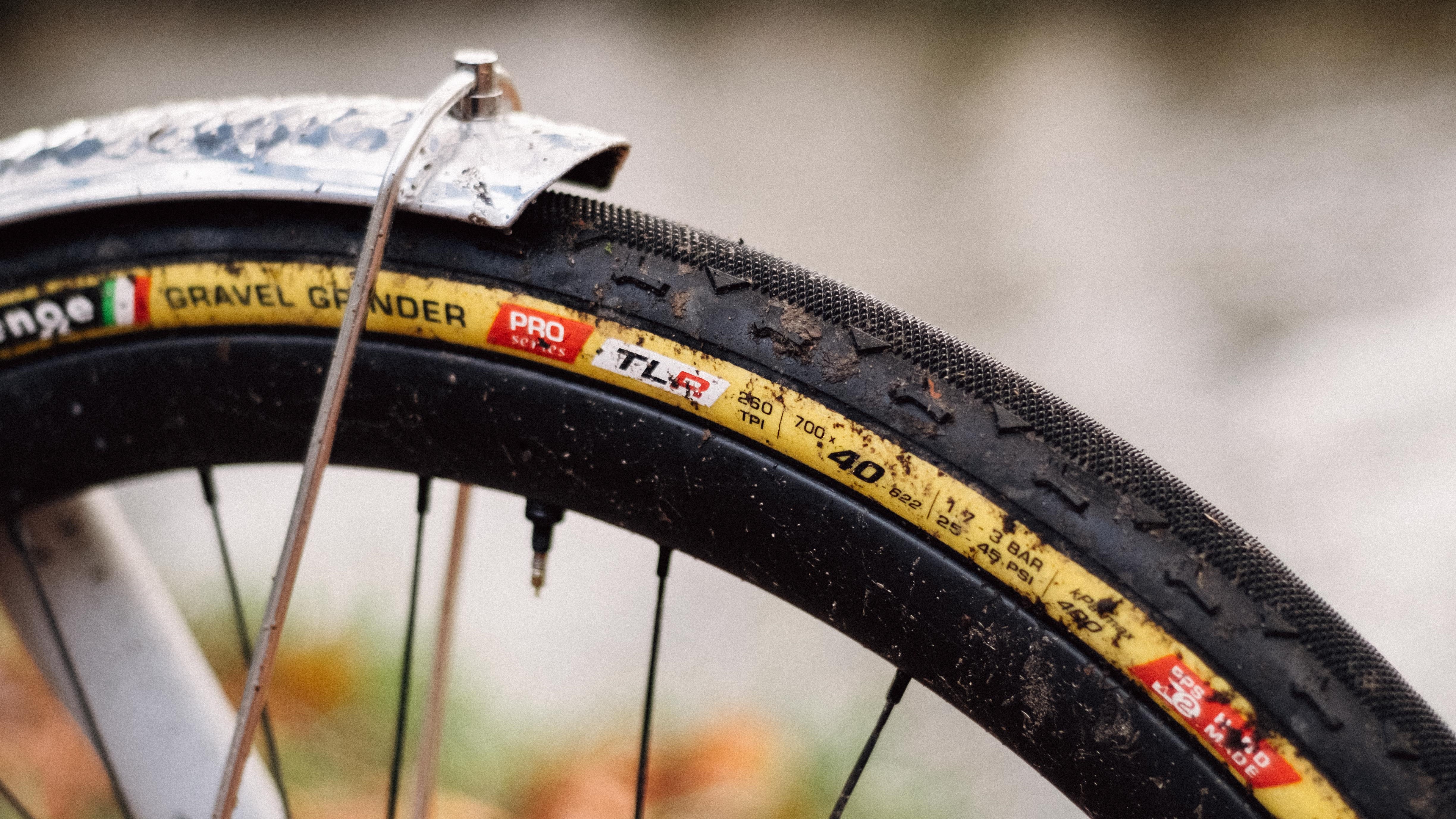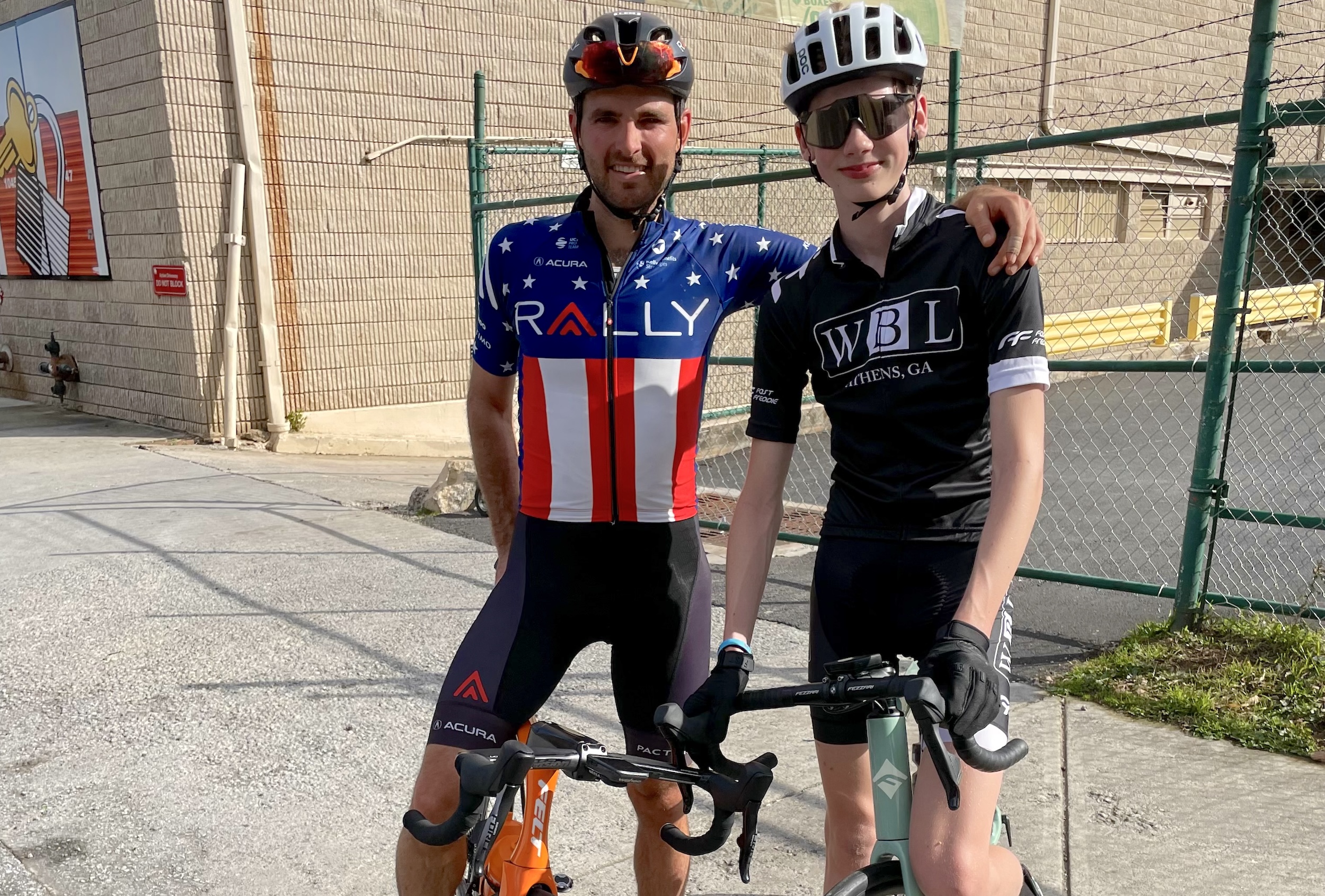Cyclingnews Verdict
They're a good tyre but they're too close to a cyclocross race tyre to be appropriate for general use
Pros
- +
Fast tread
- +
Lively, but the side knobs will catch you
- +
Plenty good enough on the road
Cons
- -
Fragile
- -
Very expensive for general use
You can trust Cyclingnews
The Challenge Gravel Grinder has been around for years. It was one of the first and best gravel tires back when we (myself included) were making do with cyclocross bikes. I ran the original versions for years, swapping out only for the very deepest winter months. Things were easier then; tubeless hadn’t really caught on. I liked them because they didn’t hold me back on the tarmac, and were fast as hell off road, if a little squirrely.
Now Challenge has updated them, though you wouldn’t really know to look at them, you’ll just have to take my word for it. Are they as good as the originals, are they better, and why would you want a tyre with a centre that’s almost a winter road tyre, and side knobs designed for the muddiest cyclocross courses?
I’ve had these fitted up to my gravel bike for a while around a set of Parcours Alta wheels. They've been around the woods, on gravelly trails and a lot of road miles in between too. I still love them, though I suspect they’re not going to be for everyone.
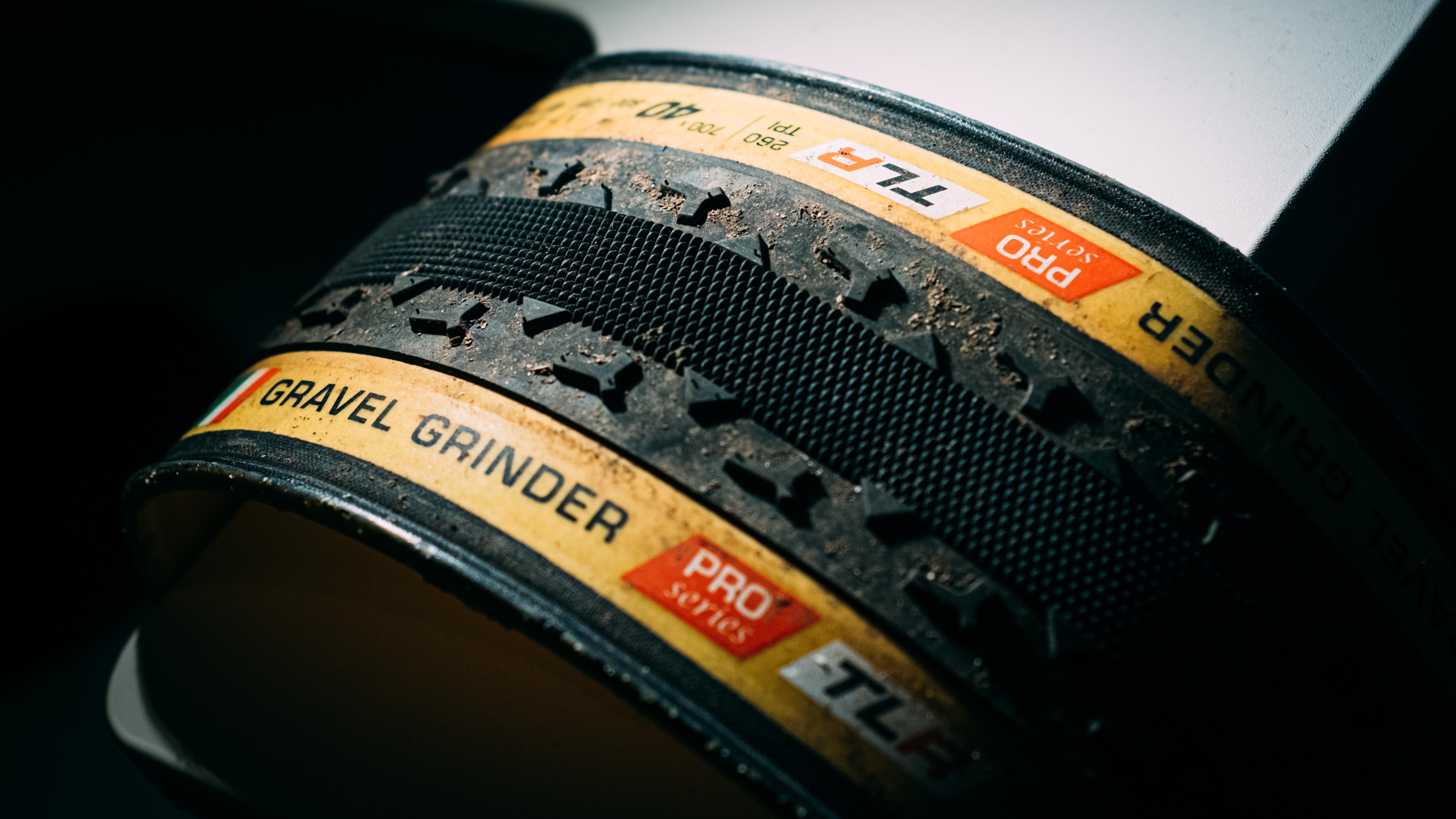
Design and aesthetics
What we have here is the 40mm, cotton cased (or what Challenge refers to as ‘Handmade’), tubeless ready version of the tyre. It comes in widths as low as 33mm, and as well as a tubeless cotton case, you could opt for a standard vulcanised rubber construction, or even a tubular (in 33mm cyclocross width only). You can still get the old version too, and at a glance, it’s pretty hard to see which is the new tread and which is the old, besides the “NEW” banner slapped across the image of these tyres in particular.
As a primer, the Gravel Grinder grew out of the brand's Chicane cyclocross tyre, but was just the name for the larger volume model of the same tread. Fundamentally this means it's a tyre designed to be raced at low pressures on a 'cross course, meaning hardpacked mud, maybe some sand, and by riders used to things getting slippery. Bear this in mind, because it's key to understanding how the tyre behaves when you take it out into more general riding.
The tyre tread is based on a file centre, bordered by widely spaced triangles. So far, so all-road. Beyond the file-triangle coalition is a no-man's-land of empty rubber, punctuated by the instantly recognisable shoulder knobs from Challenge’s flagship mud tyre, the Limus. As an aside, if you want to get nerdy about tyre tread, the best place to start is our comprehensive guide to cyclocross tyres. The main difference to the old tyre is that the central file texture is finer, and there is no longer a gap between the files and the shoulder diamonds.
As with the Limus itself, the large, angular shoulder knobs are widely spaced so they don’t clog up with mud, and diamond files don’t really clog anyway, as there aren’t any gaps to speak of.
The latest race content, interviews, features, reviews and expert buying guides, direct to your inbox!
In this case, the slightly confused tread is glued onto a 260 TPI casing. If you're wondering 'what is TPI?,' it stands for threads per inch, and in a way, it is a measure of how flexible the tyre carcass is. Higher number, more supple, theoretically more grip and a smoother ride, but consequently more fragile. Cotton isn’t renowned for its resistance to sharp objects; you don’t see the NYPD wearing an extra T-shirt as a stab vest.
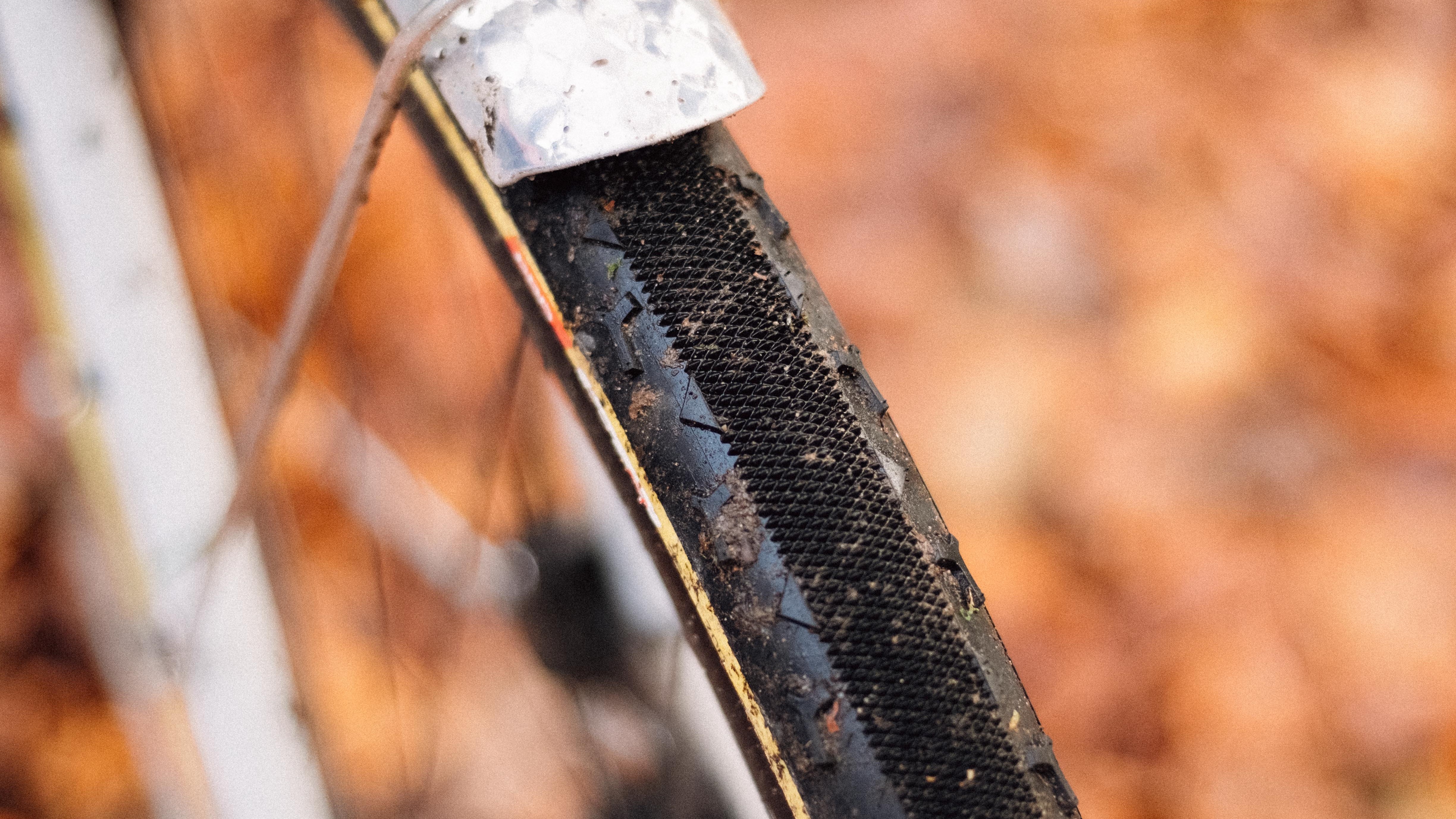
Performance
With my old set, before the days of tubeless, I could happily roll straight into how they ride, but now I have to address the setup. Challenge handmade clinchers are consistently difficult to install, difficult to seat, and take longer to seal. That’s the trade off for how they ride I’m afraid. As per the old adage, it doesn’t get easier, you just get faster… at installing them.
If you read my review of the Challenge Getaway, you’ll see why I refuse to use the Challenge own-brand sealant. It doesn’t work, don’t bother. Here I used Squirt Sealant, with the included little tube of ceramic beads. For most tyres I’d be happy to use Squirt; it’s yet to let me down, but for Challenge tyres you’re better off going with an additive-free solution (my go-to would be Stan’s Race in this case). The problem isn’t so much that adding beads to a sealant is inherently bad, it’s just that I’ve found Challenge tyres are usually difficult to seat. In the struggle of setting up you often end up with sealant on the tyre's bead, which then attracts the little additive beads. These then stay stuck to the bead of the tyre, making it harder to seat properly, and making life harder for the sealant to form an effective seal, as clumps of them can create quite large gaps. This is something I only realised upon removing the tyre. Over the course of its testing, I would often come back to the garage to find one or both of the tyres had suddenly gone totally flat overnight. This isn’t necessarily the fault of the tyre, but it’s certainly more of an issue with harder-to-seat tyres in general.
How do they ride, though? Very well, I love the tread. The way I described the old tyres to my friends, who patiently sat through another tyre description at dinner, is that they’re fast, great for skids and slip-and-slide fun, but with a get-out-of-jail-free card in the form of the shoulder knobs. These are really no different, and if anything even more so than before given the even finer nature of the file tred centre, but they really aren't going to be to everyone's liking.
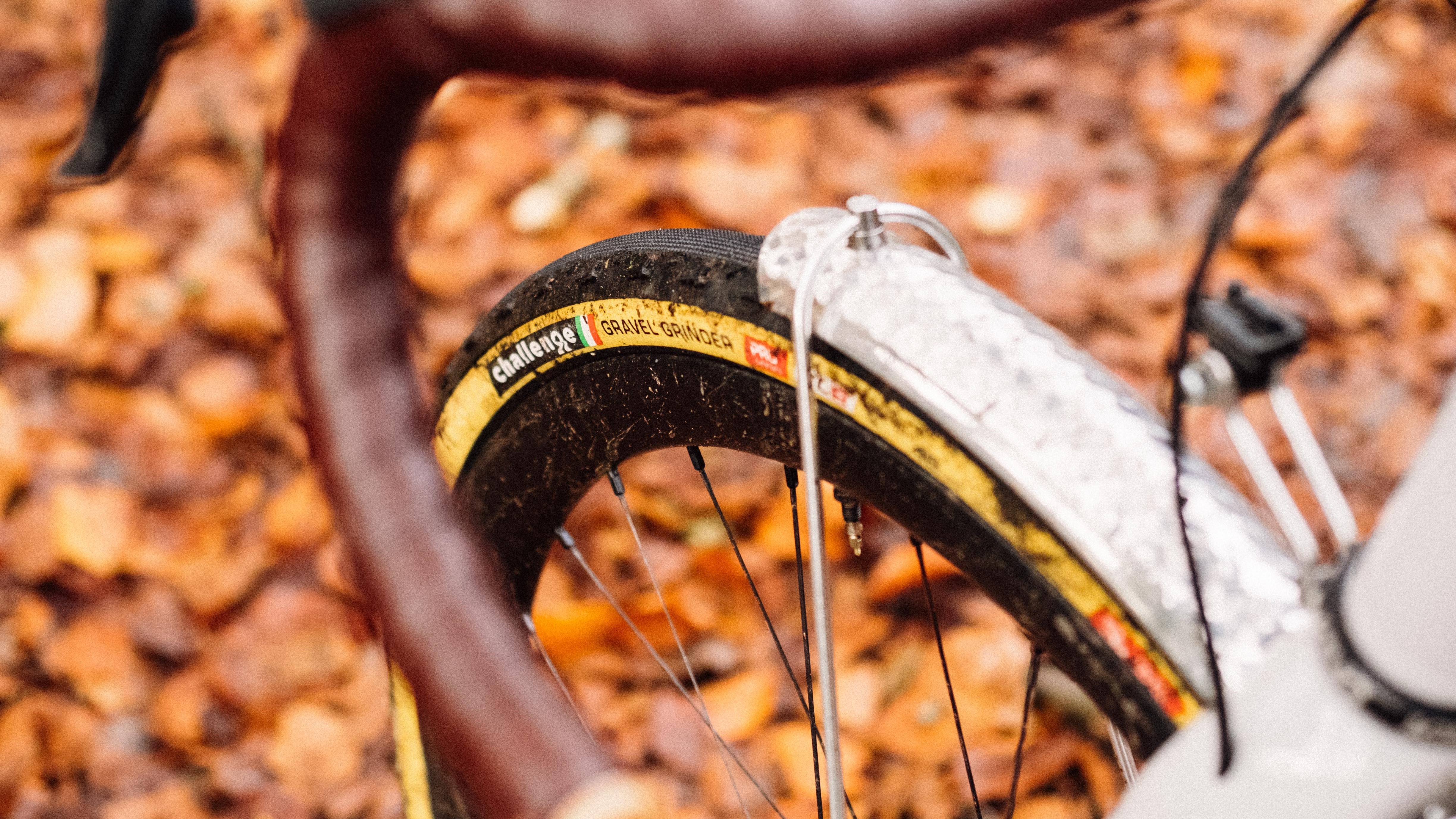
The central tread is a fast file, it’s finer than the outgoing model, and perfectly happy ticking along on the road, and over broken tarmac and grass-up-the-middle lanes at speed. I have a friend who used the old ones as his winter road tyres, and I don’t think he’s a lunatic for it.
Venture off the road and things become interesting, and they may begin to split opinions here. The file tread, fast on road, is also rapid on easy, well graded gravel. If your riding consists of a lot of mucky roads, interjected by the occasional excursion across a well-graded track, then you’re in luck here.
Where things start to get dicey is when the grip lets go. When climbing, they’re all good unless you venture into mud or wet rocks. With the right pressure, you’re golden for the most part, but in cornering, there’s a point at which the file centre gives up. They do break traction, and momentarily your heart gets familiar with your tonsils, but then the side knobs from the Limus kick in and save the day. Don’t be fooled, though, these aren’t mud tyres. Maintaining forward momentum through actual slop is hard going, but if you want to sacrifice a bit of grip for some more speed then these are an absolute hoot; more fun than the Getaways, and despite the lower profile look of the tread, I felt more confident in pushing them in the bends but only because I know they'll catch me. They are less predictable, and for most people, this isn't a good thing I suspect.
While the Getaway made a great deal of sense in having the cotton casing, as it was more of a race option, I think you’d be better served here by running lower TPI sidewalls if you aren’t using them for racing. The lighter, more supple carcass of the cotton will give you more grip, and weigh less, but the fragility for day-to-day use isn’t something I’d wish to countenance, but I do live somewhere with a lot of shaley, sharp rocks. The stiffer sidewalls of vulcanised rubber can also stand up to harder cornering without folding under the load, so if you really want to push them in the turns, which I recommend you do because its a) great fun, and b) you look like a hero capable of saving every wheel slip, you can probably go a little harder on the cheaper tyre.
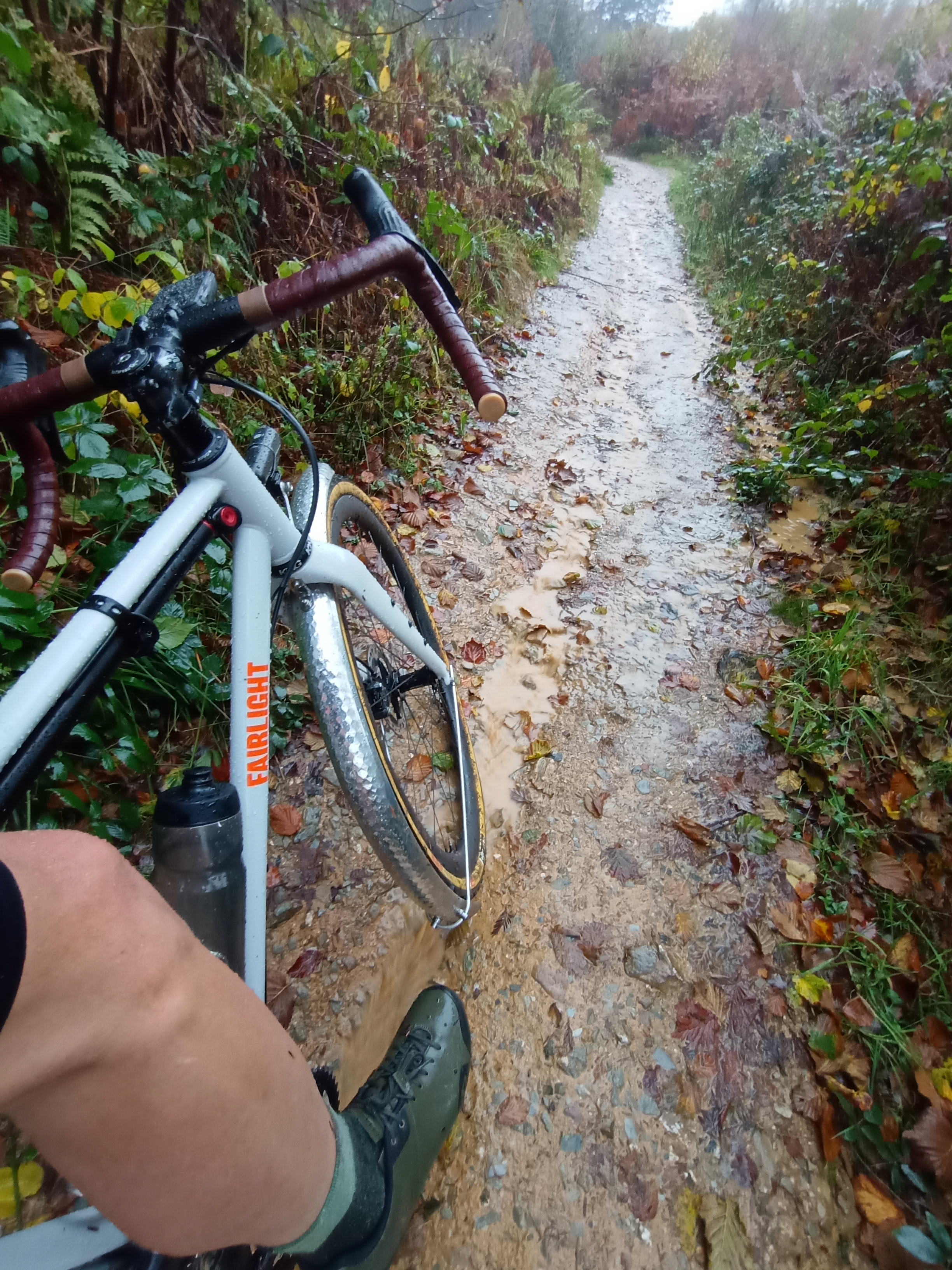
Value
In my mind, this value section is tantamount to the question “would I buy these with my own money?” to a certain extent. And the answer is yes, but I’d buy the vulcanised version. These aren't ‘too supple’, per se, but they are constructed using a race casing, despite a tread that, to me, doesn’t overly make sense for gravel racing.
The central tread, especially now it’s been made finer, doesn’t offer the grip you’d want for extended gravel periods, and while they’ll do a good job at catching you I’d suggest they’re too unpredictable. Even if there wasn’t a cheaper option, you’re looking at £140 to kit yourself out with these, which is a pretty large sum of money.
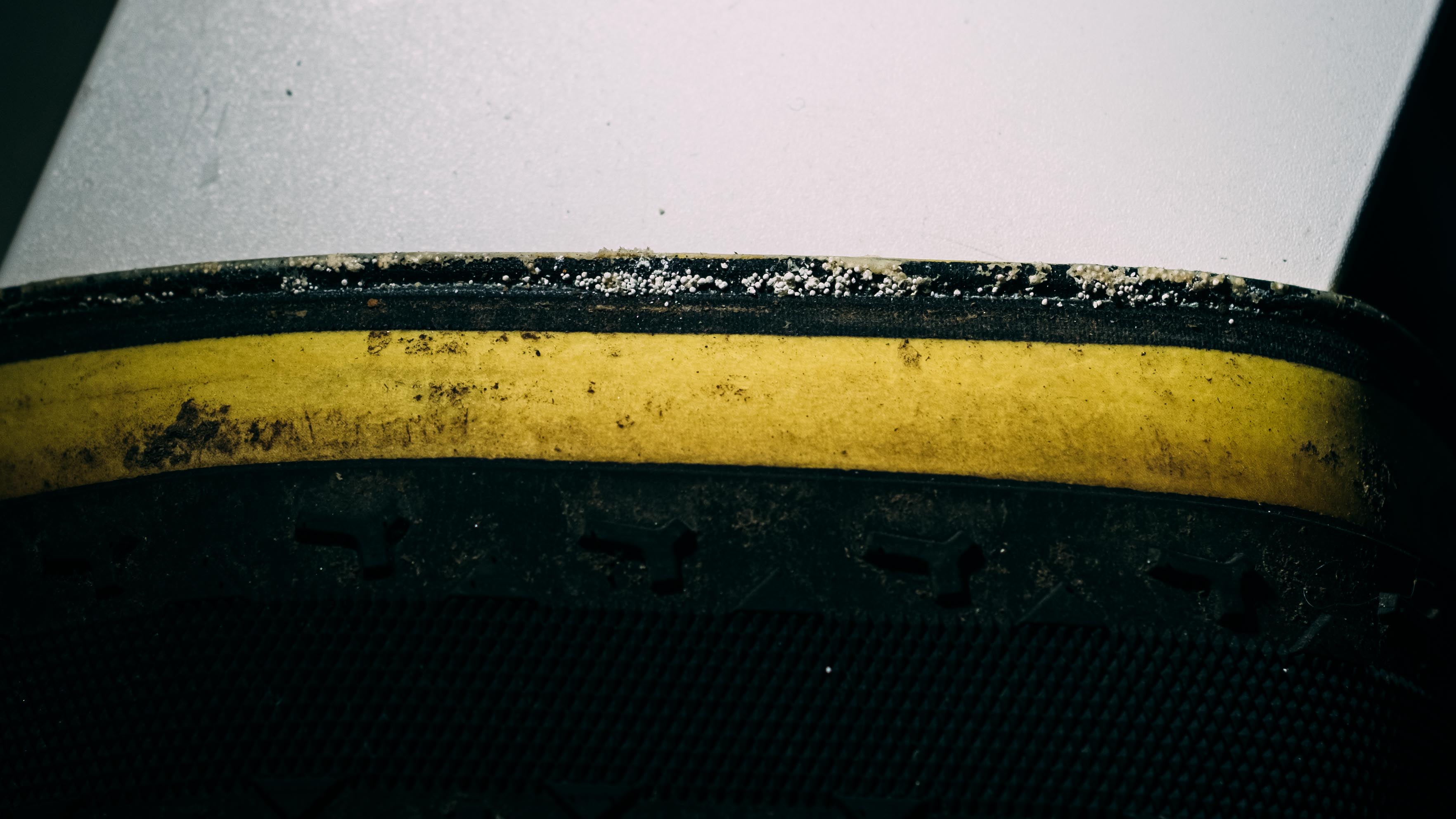
Verdict
These are a good tyre, but, in the handmade casing, they feel a little lost in terms of purpose. The tread isn’t a race tread, but the casing is. They’re brilliant fun, truly a hoot if you like to live a little dangerously, or if you spend a lot of time on the road and get easily distracted by the call of a woodland shortcut where you can skid about like a child. They are, after all, just a big cyclocross tyres, and if you're used to how those feel then they're great, but they don't provide the security that everyone looks for.
In short, the're great fun, but save yourself some cash and buy the vulcanised ones. The difference between the old and the new tread is so minimal it makes little to no odds, so they’ll offer better value too, and you won’t have to worry so much about sharp stuff.
| Attributes | Notes | Rating |
|---|---|---|
| Design and aesthetics | They look lovely, especially once dirty. The tread is a little confused from a design point of view though; it's an adapted CX race tyre, but it doesn't make sense for gravel so much | 9/10 |
| Performance | I like them and they're good fun, but they will take some getting used to, and to many they will feel unpredictable | 7/10 |
| Tubeless setup | Difficult to get onto the rim, difficult to seat, difficult to seal | 3/10 |
| Puncture resistance | The sidewalls are very vulnerable. With the right sealant they do alright, the Challenge sealant failed to seal a pin prick. | 5/10 |
| Value | Race tyre pricing for a tyre you probably won't want to race on | 6/10 |
| Overall rating | Row 5 - Cell 1 | 60% |

Will joined the Cyclingnews team as a reviews writer in 2022, having previously written for Cyclist, BikeRadar and Advntr. He’s tried his hand at most cycling disciplines, from the standard mix of road, gravel, and mountain bike, to the more unusual like bike polo and tracklocross. He’s made his own bike frames, covered tech news from the biggest races on the planet, and published countless premium galleries thanks to his excellent photographic eye. Also, given he doesn’t ever ride indoors he’s become a real expert on foul-weather riding gear. His collection of bikes is a real smorgasbord, with everything from vintage-style steel tourers through to superlight flat bar hill climb machines.
